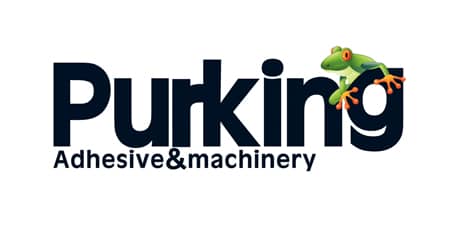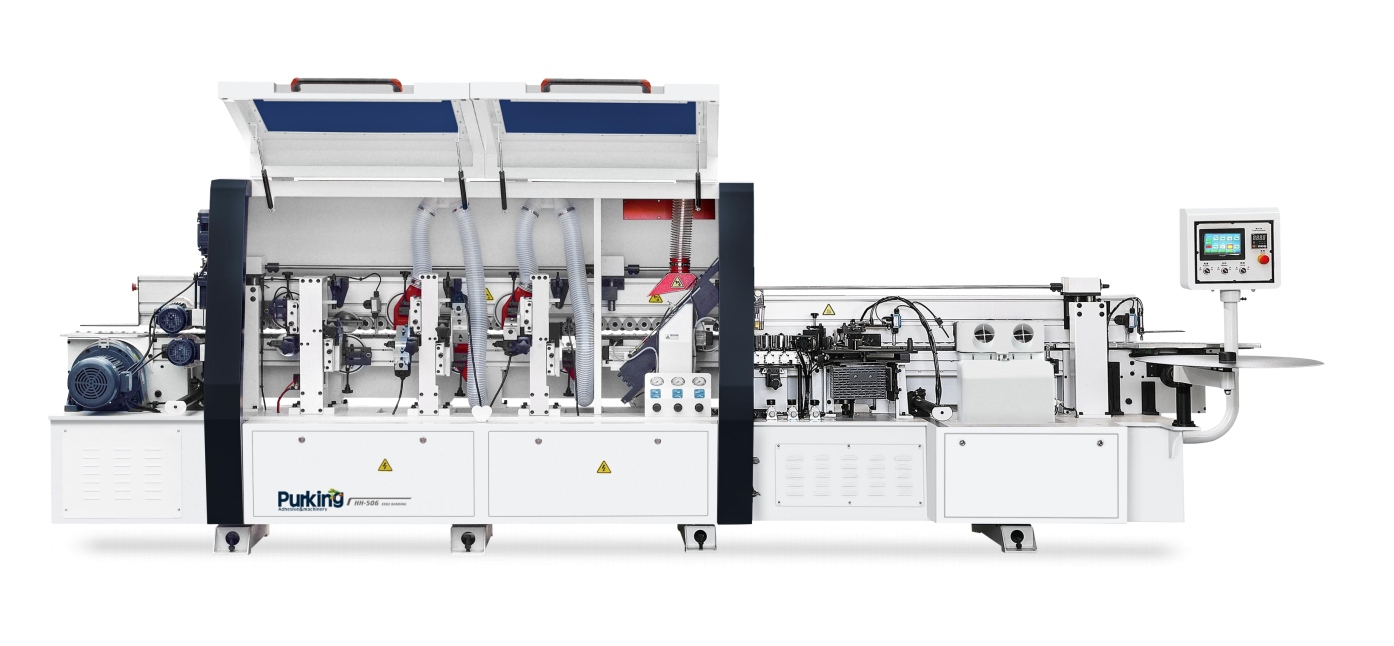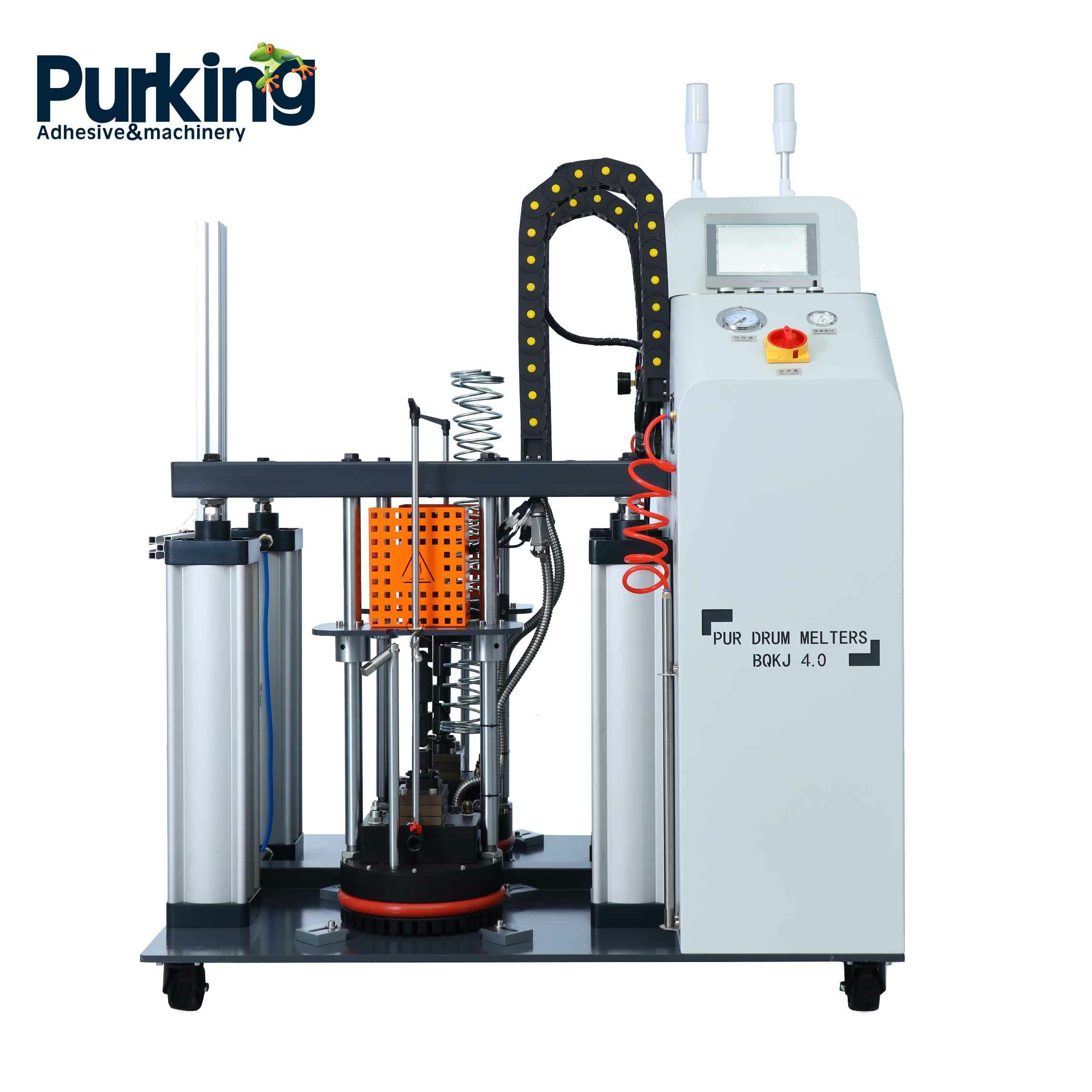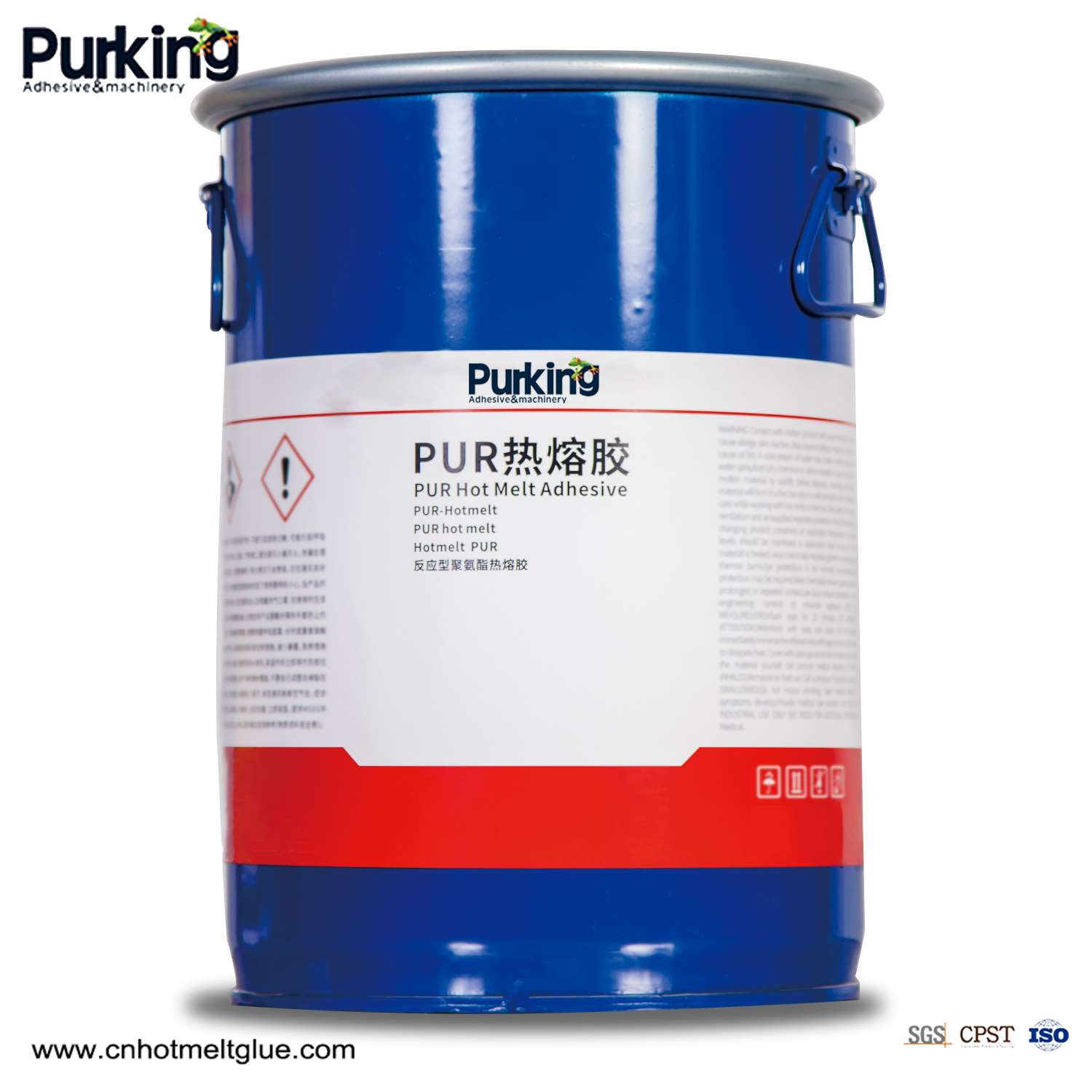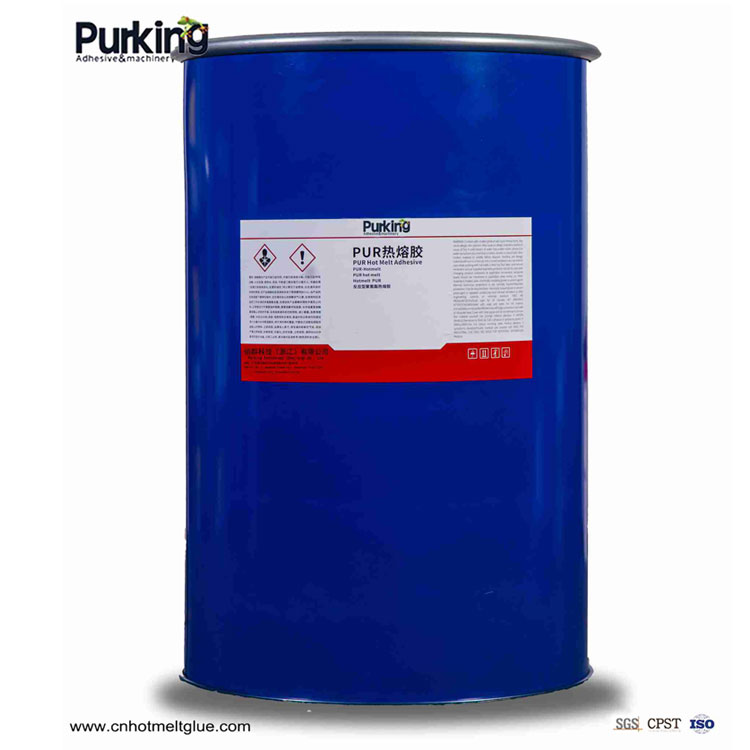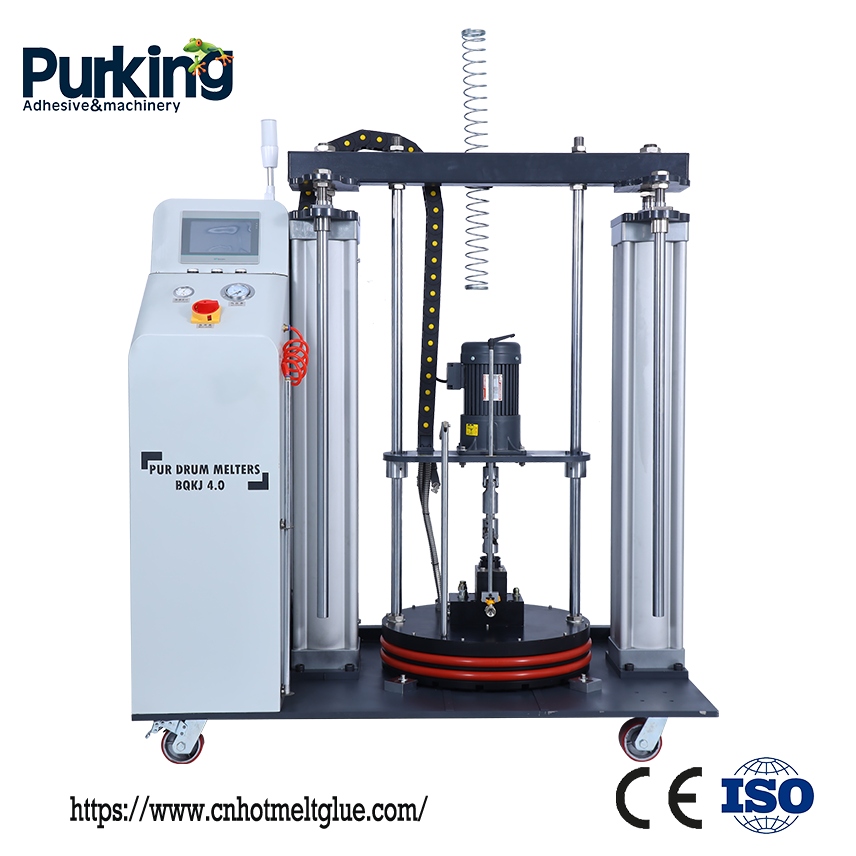During the use of polyurethane hot melt adhesive, it needs to be heated and melted, and kept in a molten state for extrusion. Therefore, under the action of long-term heat and oxygen, the polymer chains of its main components such as matrix polymer, tackifier, wax, etc., the carbon-hydrogen bond is easily broken, and a chain oxidation reaction occurs, causing the relative molecular weight to decrease, making the adhesive Viscosity and color change, affecting the use of glue. The glue should maintain viscosity stability during use, so as to keep the glue extrusion and coating amount uniform, and keep the color unchanged. The chain process of oxidation greatly reduces the heat aging speed, prevents the deterioration of the glue and the reduction of the bonding strength, etc.
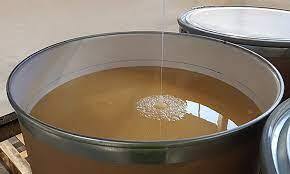
What are the requirements for antioxidants used as adhesives:
The following requirements should be met:
1. Good compatibility with adhesives, preferably compatibility;
2. Good inhibition and anti-oxidation performance;
3. Does not affect the process and physical and mechanical properties of the adhesive;
4. Stable storage, no discoloration, delamination, gelation, deterioration, etc. of the adhesive;
5. Non-toxic or low toxicity, less polluting;
6. The source is easy and the price is reasonable.
What are the commonly used antioxidants for polyurethane hot melt adhesives? There are mainly two types;
One is a chain transfer agent, which forms a stable free radical by itself while giving an active hydrogen atom, such as N-phenyl-β-naphthylamine;
Features of N-phenyl-β-captylamine: light gray powder, gradually turning gray-red when exposed to air or sunlight, relative density 1.20, melting point 108°C, insoluble in water, flammable, highly toxic, regarded as Carcinogens; should be used as little or as little as possible. It can be replaced by its N, N, N', N'-tetraphenylaminomethane, its characteristics: off-white powder or amber liquid, melting point range 29-36 ° C, three-dimensional structure content ≥ 35%, this antioxidant effect High, low pollution and coloring. Compared with other amine antioxidants, its outstanding advantages are small migration, low pollution, slight toxicity, good heat resistance and oxidation resistance, and can completely replace N-phenyl-β-naphthylamine, And better performance.
The other is sterically hindered phenols, which are characterized by one or two larger tert-butyl groups at the ortho position of the Phenolic hydroxyl group, using steric hindrance and a higher conjugation system to make the phenols generated after chain transfer Free radical stabilization, such as 2,6-di-tert-p-cresol. Usually the amount of antioxidants is 0.1% to 1.5%, generally not more than 2%. Antioxidants are mainly phenols and phenol derivatives.
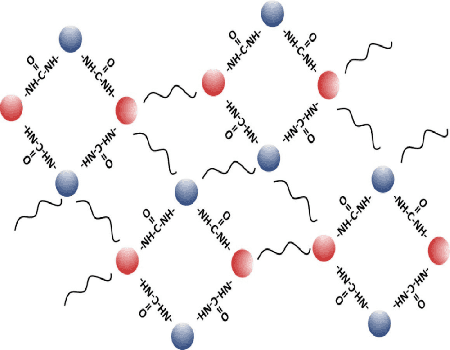
2,6-Di-tert-butyl-p-cresol: The pure product is white crystal, the color turns yellow when exposed to light, and gradually deepens, the relative density is 0.8937, and the melting point is 70°C. Soluble in dry benzene, toluene, methanol, ethanol, isopropanol, butanone, carbon tetrachloride, petroleum ether, insoluble in dry water and dilute alkali solution, flammable, non-toxic, used as a non-polluting antioxidant, effective Inhibit air oxidation, thermal degradation and copper damage, and have a protective effect on thermal aging. 4,4'-Thiobis(3-methyl-6-tert-butyl)phenol, white or light yellow powder, relative density 1.06-1.12, melting point 161-164°C. Soluble in ethanol, ether, acetone, benzene, slightly soluble in petroleum ether, gasoline, insoluble in water. Low toxicity, as a non-polluting antioxidant, low volatility, high-efficiency anti-oxidation, excellent thermal stability and weather resistance.
The antioxidant used in a good hot melt adhesive is a highly efficient antioxidant with excellent thermal stability and weather resistance. It has the characteristics of insoluble in water, low toxicity, good heat resistance & oxygen resistance.
 English
English  Esperanto
Esperanto  Afrikaans
Afrikaans  Català
Català  שפה עברית
שפה עברית  Cymraeg
Cymraeg  Galego
Galego  Latviešu
Latviešu  icelandic
icelandic  ייִדיש
ייִדיש  беларускі
беларускі  Hrvatski
Hrvatski  Kreyòl ayisyen
Kreyòl ayisyen  Shqiptar
Shqiptar  Malti
Malti  lugha ya Kiswahili
lugha ya Kiswahili  አማርኛ
አማርኛ  Bosanski
Bosanski  Frysk
Frysk  ភាសាខ្មែរ
ភាសាខ្មែរ  ქართული
ქართული  ગુજરાતી
ગુજરાતી  Hausa
Hausa  Кыргыз тили
Кыргыз тили  ಕನ್ನಡ
ಕನ್ನಡ  Corsa
Corsa  Kurdî
Kurdî  മലയാളം
മലയാളം  Maori
Maori  Монгол хэл
Монгол хэл  Hmong
Hmong  IsiXhosa
IsiXhosa  Zulu
Zulu  Punjabi
Punjabi  پښتو
پښتو  Chichewa
Chichewa  Samoa
Samoa  Sesotho
Sesotho  සිංහල
සිංහල  Gàidhlig
Gàidhlig  Cebuano
Cebuano  Somali
Somali  Тоҷикӣ
Тоҷикӣ  O'zbek
O'zbek  Hawaiian
Hawaiian  سنڌي
سنڌي  Shinra
Shinra  Հայերեն
Հայերեն  Igbo
Igbo  Lëtzebuergesch
Lëtzebuergesch  Malagasy
Malagasy  Sundanese
Sundanese  Yoruba
Yoruba  Español
Español  Português
Português  русский
русский  Français
Français  日本語
日本語  Deutsch
Deutsch  tiếng Việt
tiếng Việt  Italiano
Italiano  Nederlands
Nederlands  ภาษาไทย
ภาษาไทย  Polski
Polski  한국어
한국어  Svenska
Svenska  magyar
magyar  Malay
Malay  বাংলা ভাষার
বাংলা ভাষার  Dansk
Dansk  Suomi
Suomi  हिन्दी
हिन्दी  Pilipino
Pilipino  Türkçe
Türkçe  Gaeilge
Gaeilge  العربية
العربية  Indonesia
Indonesia  Norsk
Norsk  تمل
تمل  český
český  ελληνικά
ελληνικά  ελληνικά
ελληνικά  український
український  Javanese
Javanese  فارسی
فارسی  தமிழ்
தமிழ்  తెలుగు
తెలుగు  नेपाली
नेपाली  Burmese
Burmese  български
български  ລາວ
ລາວ  Latine
Latine  Қазақша
Қазақша  Euskal
Euskal  Az?rbaycan
Az?rbaycan  Az?rbaycan
Az?rbaycan  Slovensky jazyk
Slovensky jazyk  Македонски
Македонски  Lietuvos
Lietuvos  Eesti Keel
Eesti Keel  Română
Română  Slovenski
Slovenski  मराठी
मराठी  Srpski језик
Srpski језик 